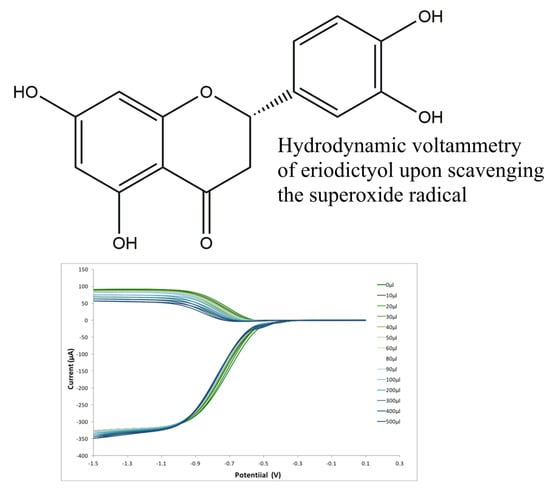Effective and Novel Application of Hydrodynamic Voltammetry to the Study of Superoxide Radical Scavenging by Natural Phenolic Antioxidants
Abstract
1. Introduction
2. Materials and Methods
2.1. Reagents
2.2. Equipment
2.3. Procedures
2.3.1. Potentiometric Titration of Superoxide with Iodine
2.3.2. Calibration of CV with Potassium Superoxide and Iodine
2.4. Superoxide Scavenging by Antioxidants
2.4.1. CV Study
2.4.2. RRDE Study
2.5. Computational Study
2.6. Diffraction Study
3. Results
3.1. Generation and Measurement of Superoxide Radical by Cyclic and Hydrodynamic Voltammetry
3.1.1. Cyclic Voltammetry
3.1.2. Hydrodynamic Voltammetry (RRDE)
3.2. Potentiometric Superoxide Titration with Iodine
3.3. CV Calibration
3.4. Measuring Antioxidant Activity
3.5. Diffraction
4. Discussion
4.1. Cyclic Voltammetry
4.2. RRDE
4.3. X-ray Diffraction
4.4. DFT Study
5. Conclusions
Supplementary Materials
Author Contributions
Funding
Acknowledgments
Conflicts of Interest
References
- Gutteridge, J.M.; Halliwell, B. Free radicals and antioxidants in the year 2000. A historical look to the future. Ann. N. Y. Acad. Sci. 2000, 899, 136–147. [Google Scholar] [CrossRef] [PubMed]
- Inoue, M.; Sato, E.; Nishikawa, M.; Park, A.; Maeda, K.; Kasahara, E. Targeting superoxide dismutase to critical sites of action. Methods Enzymol. 2002, 349, 346–354. [Google Scholar] [PubMed]
- Beyer, W.F.; Fridovich, I. Catalases—With and without heme. Basic Life Sci. 1988, 49, 651–661. [Google Scholar] [PubMed]
- Frankel, E.N.; Meyer, A.S. The problems of using one-dimensional methods to evaluate multifunctional food and biological antioxidants. J. Sci. Food Agric. 2000, 80, 1925–1941. [Google Scholar] [CrossRef]
- Zarepour, M.; Kaspari, K.; Stagge, S.; Rethmeier, R.; Mendel, R.R.; Bittner, F. Xanthine dehydrogenase AtXDH1 from Arabidopsis thaliana is a potent producer of superoxide anions via its NADH oxidase activity. Plant Mol. Biol. 2010, 72, 301–310. [Google Scholar] [CrossRef] [PubMed]
- Barthomeuf, C.M.; Kemertelidze, E.D.V.V.B.E.P. Evaluation of the dietetic and therapeutic potential of a high molecular weight hydroxycinnamate-derived polymer from Symphytum asperum Lepech. Regarding its antioxidant, antilipoperoxidant, antiinflammatory, and cytotoxic properties. J. Agric. Food Chem. 2001, 49, 3942–3946. [Google Scholar] [CrossRef] [PubMed]
- Grivennikova, V.G.; Vinogradov, A.D. Generation of superoxide by the mitochondrial complex I. Biochim. Biophys. Acta Bioenergy 2006, 1757, 553–561. [Google Scholar] [CrossRef]
- Kladna, A.; Berczynski, P.; Kruk, I.; Michalska, T.; Aboul-Enein, H.Y. Superoxide anion radical scavenging property of catecholamines. Luminescence 2013, 28, 450–455. [Google Scholar] [CrossRef]
- Severino, J.F.; Goodman, B.A.; Kay, C.W.M.; Stolze, K.; Tunega, D.; Reichenauer, T.G.; Pirker, K.F. Free radicals generated during oxidation of green tea polyphenols: Electron paramagnetic resonance spectroscopy combined with density functional theory calculations. Free Radic. Biol. Med. 2009, 46, 1076–1088. [Google Scholar] [CrossRef]
- Le Bourvellec, C.; Hauchard, D.; Darchen, A.; Burgot, J.L.; Abasq, M.L. Validation of a new method using the reactivity of electrogenerated superoxide radical in the antioxidant capacity determination of flavonoids. Talanta 2008, 75, 1098–1103. [Google Scholar] [CrossRef]
- Chiste, R.C.; Freitas, M.; Mercadante, A.Z.; Fernandes, E. Superoxide anion radical: Generation and detection in cellular and non-cellular systems. Curr. Med. Chem. 2015, 22, 4234–4256. [Google Scholar] [CrossRef] [PubMed]
- Chen, X.; Tait, A.R.; Kitts, D.D. Flavonoid composition of orange peel and its association with antioxidant and anti-inflammatory activities. Food Chem. 2017, 218, 15–21. [Google Scholar] [CrossRef] [PubMed]
- Lee, S.E.; Yang, H.; Son, G.W.; Park, H.R.; Park, C.S.; Jin, Y.H.; Park, Y.S. Eriodictyol protects endothelial cells against oxidative Stress-induced cell death through modulating ERK/Nrf2/ARE-dependent heme oxygenase-1 expression. Int. J. Mol. Sci. 2015, 16, 14526–14539. [Google Scholar] [CrossRef] [PubMed]
- Kumar, S.; Pandey, A.K. Chemistry and biological activities of flavonoids: An overview. Sci. World J. 2013, 162750. [Google Scholar] [CrossRef] [PubMed]
- Sugihara, N.; Arakawa, T.; Ohnishi, M.; Furuno, K. Anti- and pro-oxidative effects of flavonoids on metal-induced lipid hydroperoxide-dependent lipid peroxidation in cultured hepatocytes loaded with alpha-linolenic acid. Free Radic. Biol. Med. 1999, 27, 1313–1323. [Google Scholar] [CrossRef]
- Mayrhofer, K.; Strmcnik, D.; Blizanac, B.; Stamenkovic, V.; Arenz, M.; Markovic, N. Measurement of oxygen reduction activities via the rotating disc electrode method: From Pt model surfaces to carbon-supported high surface area catalysts. Electrochim. Acta 2008, 53, 3181–3188. [Google Scholar] [CrossRef]
- Delley, B. From molecules to solids with the DMol3 approach. J. Chem. Phys. 2000, 113, 7756–7764. [Google Scholar] [CrossRef]
- Perdew, J.P.; Chevary, J.A.; Vosko, S.H.; Jackson, K.A.; Pederson, M.R.; Singh, D.J.; Fiolhais, C. Atoms, molecules, solids, and surfaces: Applications of the generalized gradient approximation for exchange and correlation. Phys. Rev. B 1992, 46, 6671–6687. [Google Scholar] [CrossRef]
- Becke, A.D. Density-functional exchange-energy approximation with correct asymptotic behavior. Phys. Rev. A 1988, 38, 3098–3100. [Google Scholar] [CrossRef]
- Perdew, J.P.; Wang, Y. Accurate and simple analytic representation of the electron-gas correlation energy. Phys. Rev. B 1992, 45, 13244–13249. [Google Scholar] [CrossRef]
- Sheldrick, G.M. A short history of SHELX. Acta Cryst. 2008, A64, 112–122. [Google Scholar] [CrossRef] [PubMed]
- Shin, W.; Kim, S.; Chun, K.S. Structure of (R,S)-hesperetin monohydrate. Acta Cryst. C 1987, 43, 1946–1949. [Google Scholar] [CrossRef]
- Shin, W.; Lah, M.S. Structure of (R,S)-naringenin. Acta Cryst. 1986, C42, 626–628. [Google Scholar] [CrossRef]
- Herranz, J.; Garsuch, A.; Gasteiger, H.A. Using rotating ring disc electrode voltammetry to quantify the superoxide radical stability of aprotic Li–air battery electrolytes. J. Phys. Chem. C 2012, 116, 19084–19094. [Google Scholar] [CrossRef]
- Rossi, M.; Rickles, L.F.; Halpin, W.A. The crystal and molecular structure of quercetin: A biologically active and naturally occurring flavonoid. Bioorg. Chem. 1986, 14, 55–69. [Google Scholar] [CrossRef]
- Janeiro, P.; Brett, A.M.O. Catechin electrochemical oxidation mechanisms. Anal. Chim. Acta 2004, 518, 109–115. [Google Scholar] [CrossRef]
- Rene, A.; Abasq, M.; Hauchard, D.; Hapiot, P. How do phenolic compounds react toward superoxide Ion? A simple electrochemical method for evaluating antioxidant capacity. Anal. Chem. 2010, 82, 8703–8710. [Google Scholar]
- He, H.; Huang, Y.; Zhang, Q.; Wang, J.; Mei, X. Zwitterionic cocrystals of flavonoids and proline: Solid-state characterization, pharmaceutical properties, and pharmacokinetic performance. Cryst. Growth Des. 2016, 16, 2348–2356. [Google Scholar] [CrossRef]
- Beerens-Heijnen, C.G.M.; Haenen, G.R.M.M.; Oostveen, R.M.; Stalpers, E.M.; Bast, A. Protection of flavonoids against lipid peroxidation: The structure activity relationship revisited. Free Radic. Res. 2002, 36, 575–581. [Google Scholar] [CrossRef]
- Pisoschi, A.M.; Cimpeanu, C.; Predoi, G. Electrochemical methods for total antioxidant capacity and its main contributors determination: A review. Open Chem. 2015, 13, 824–856. [Google Scholar] [CrossRef]
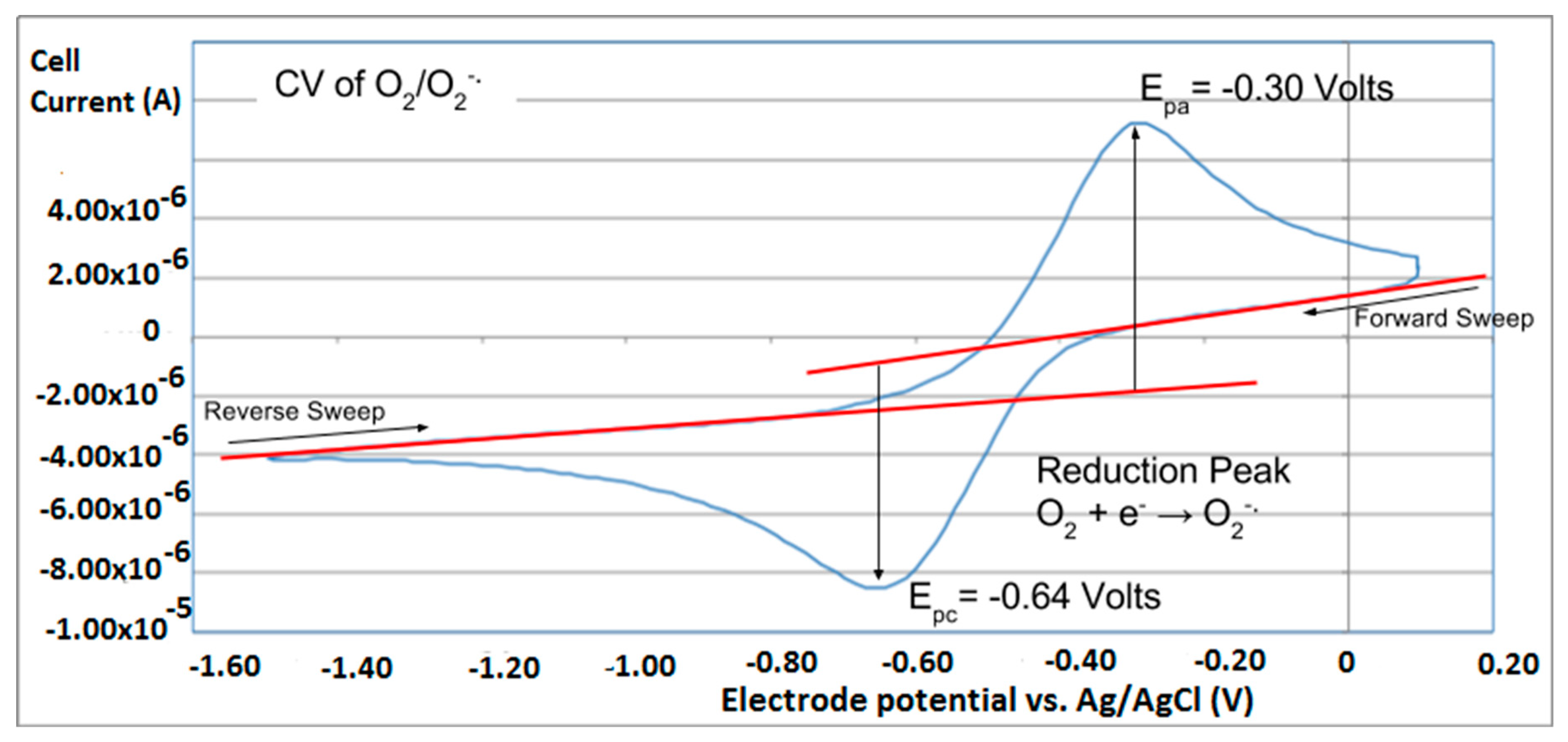
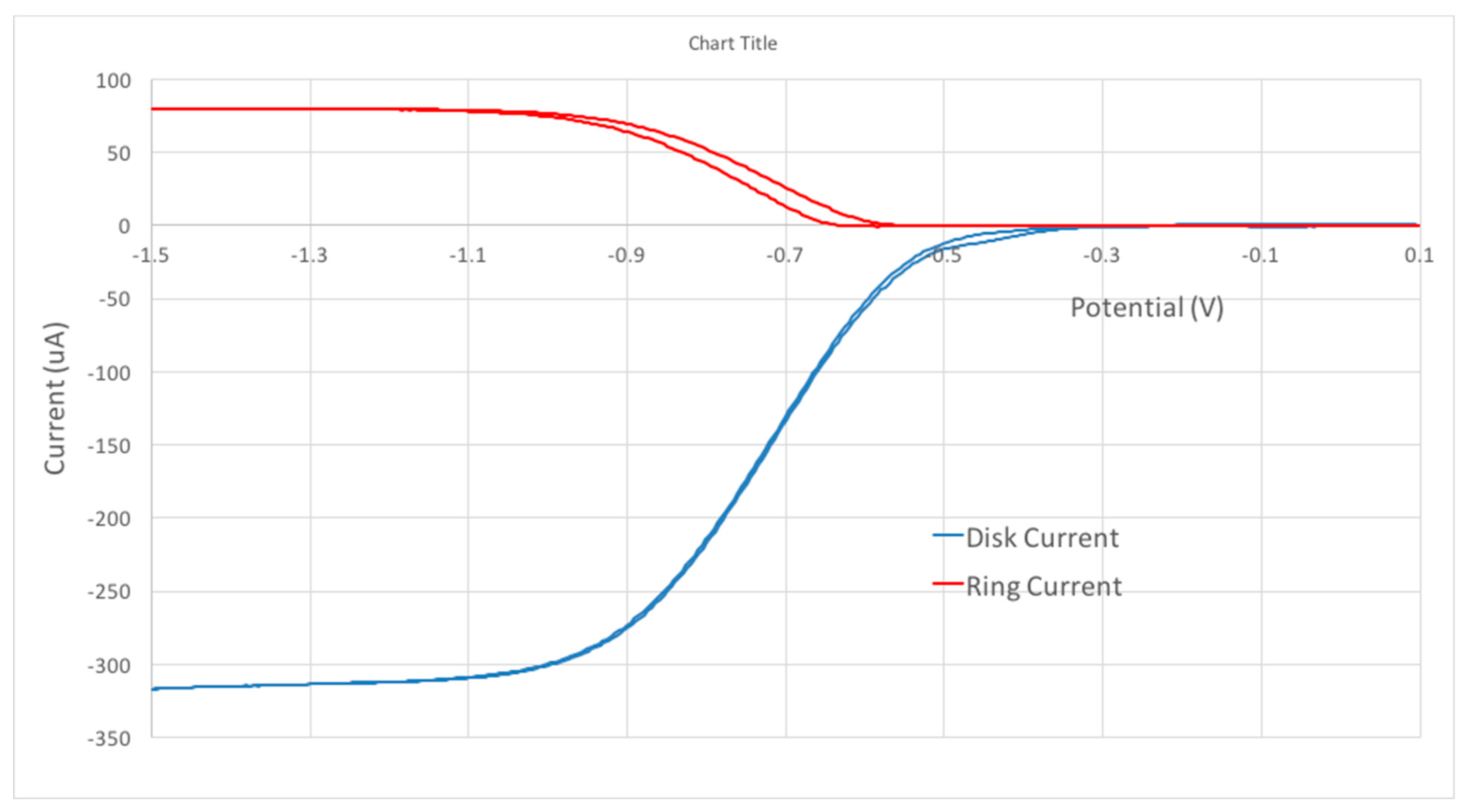
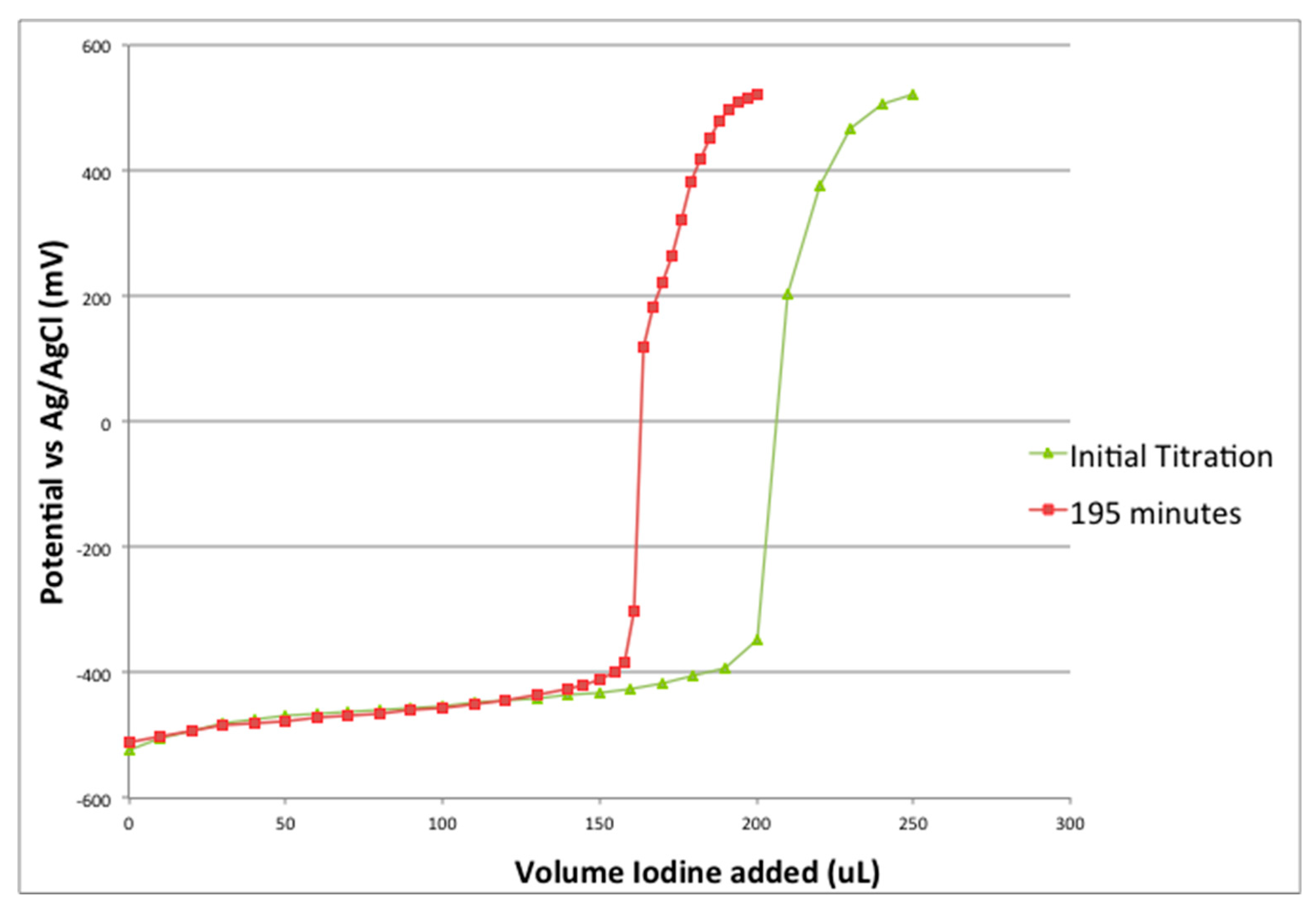

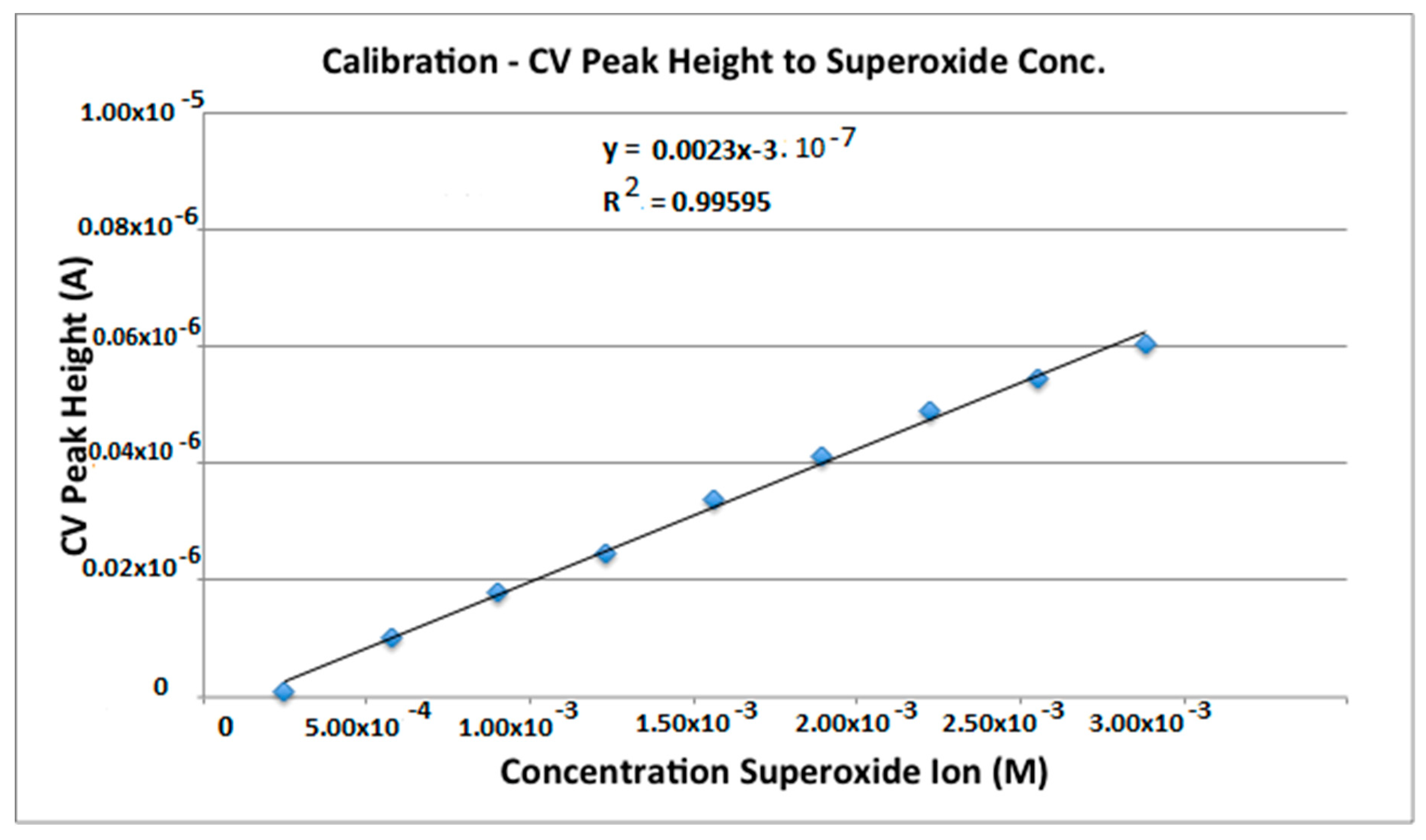
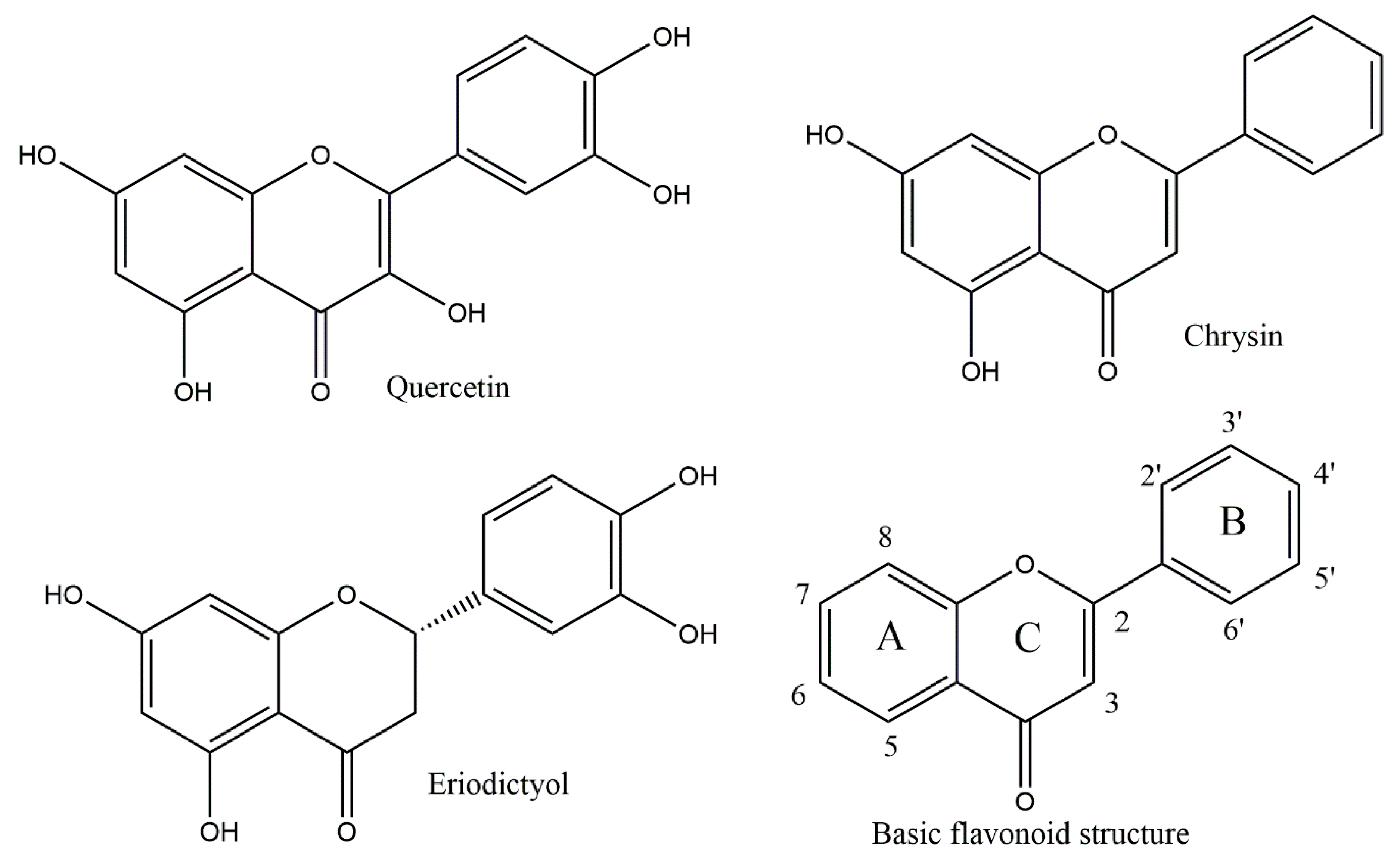
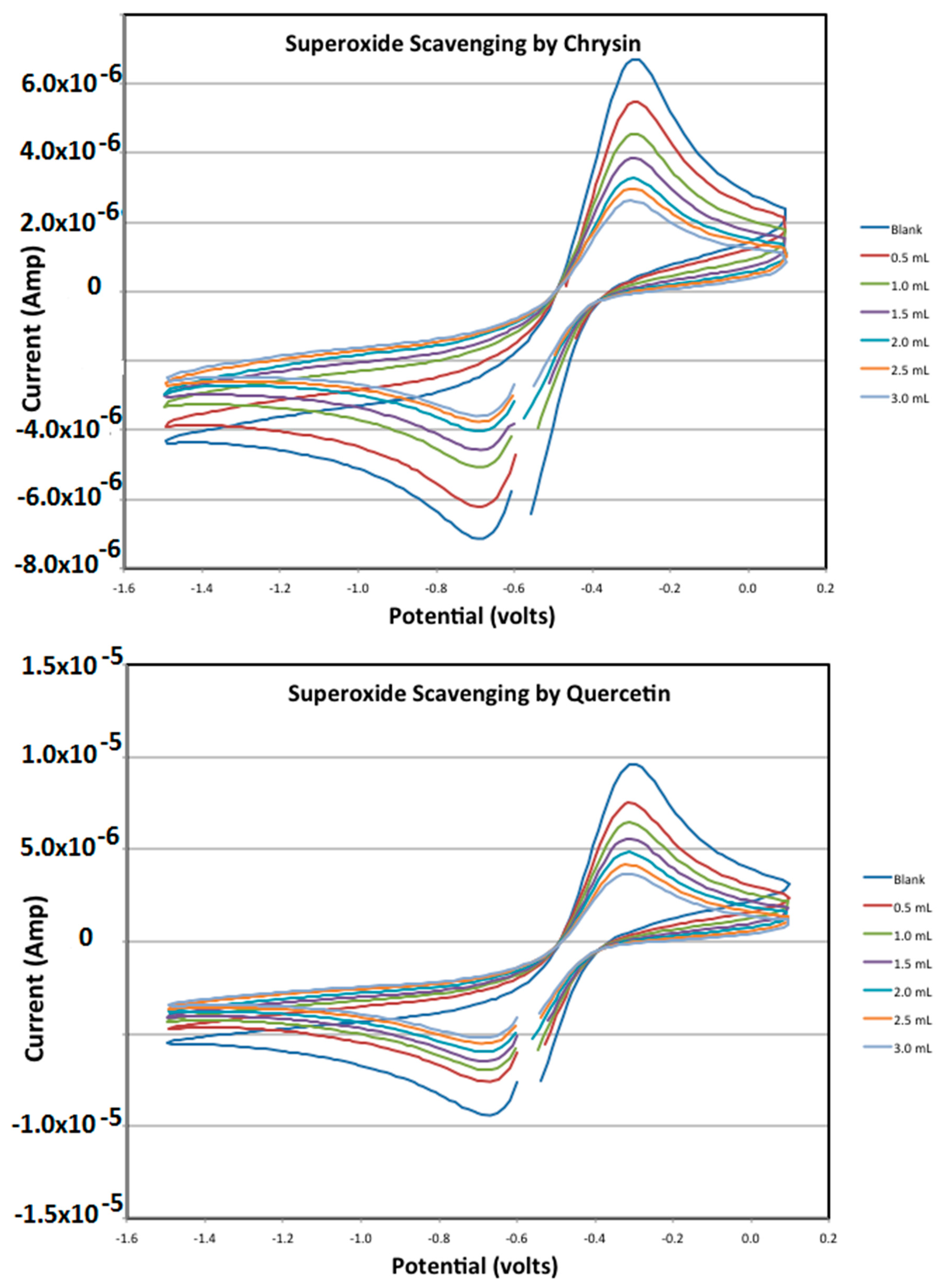
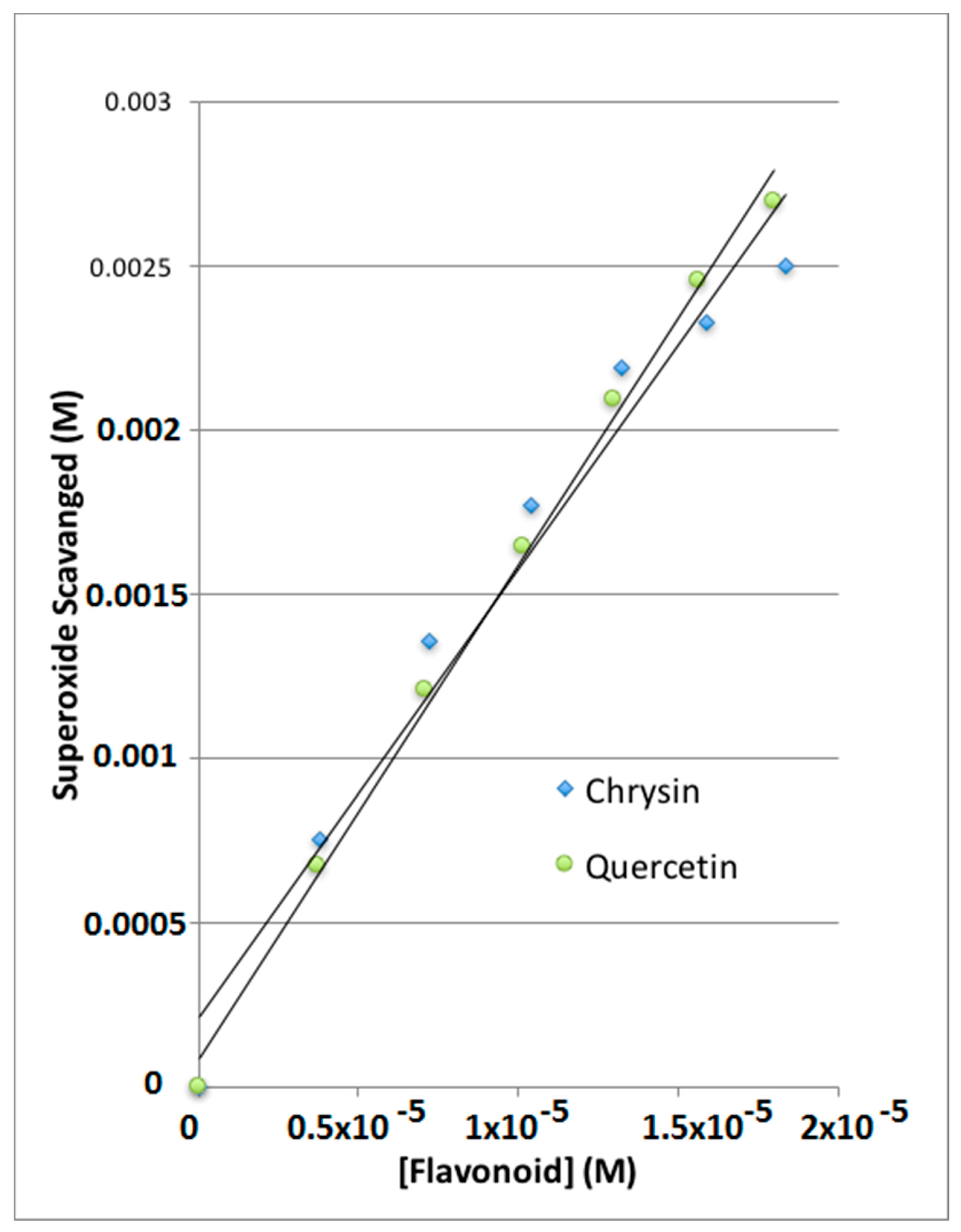

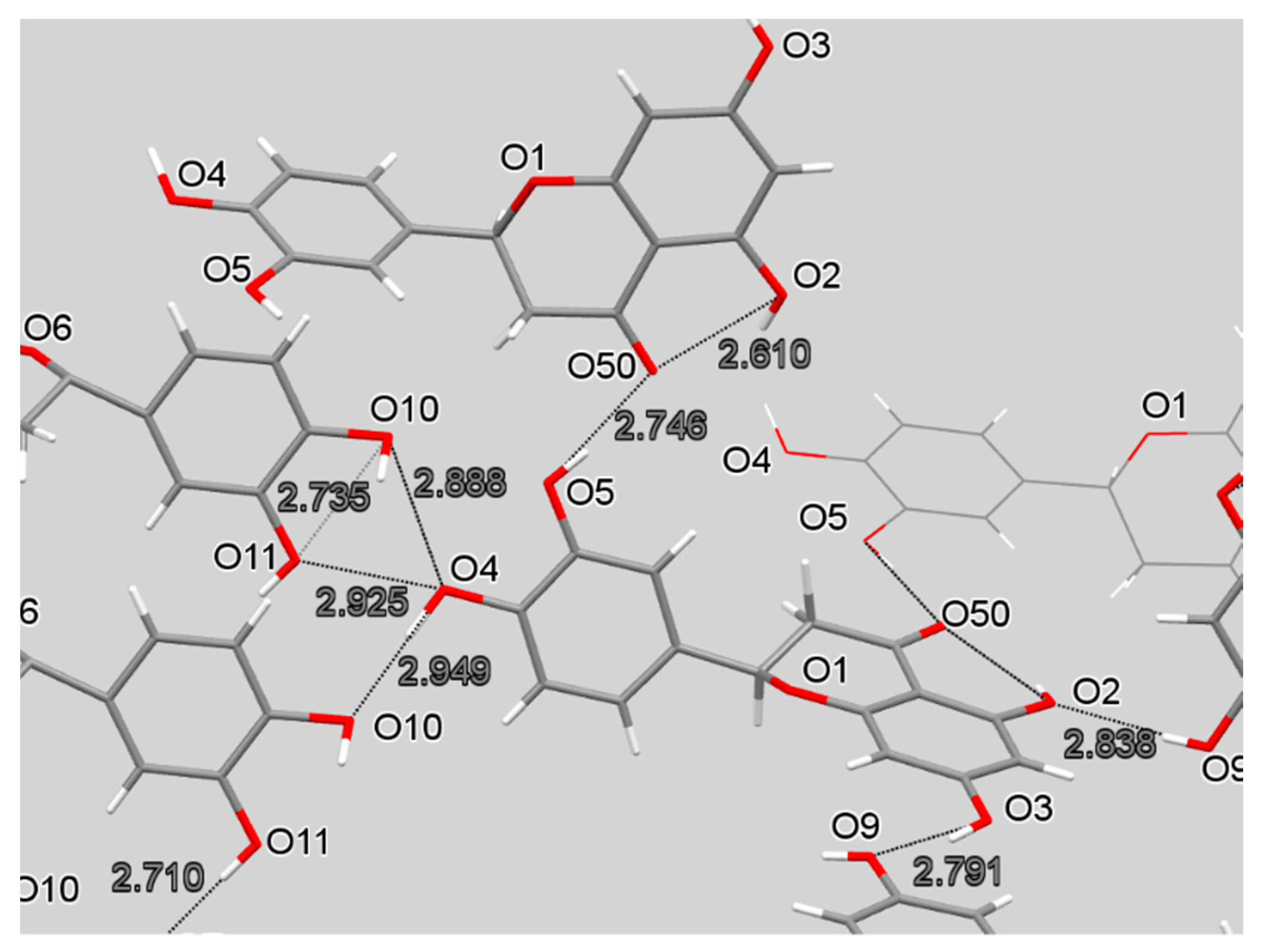
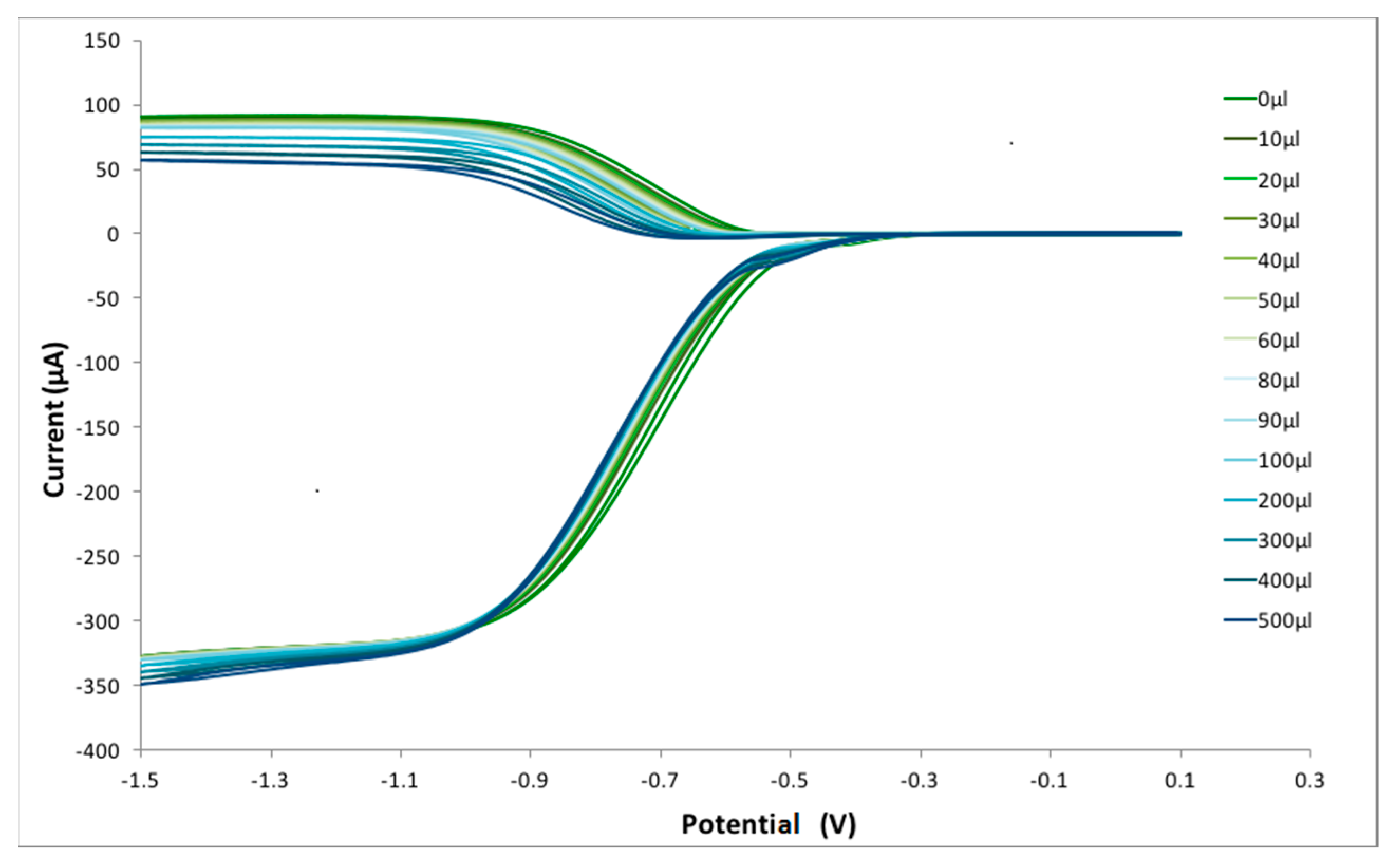
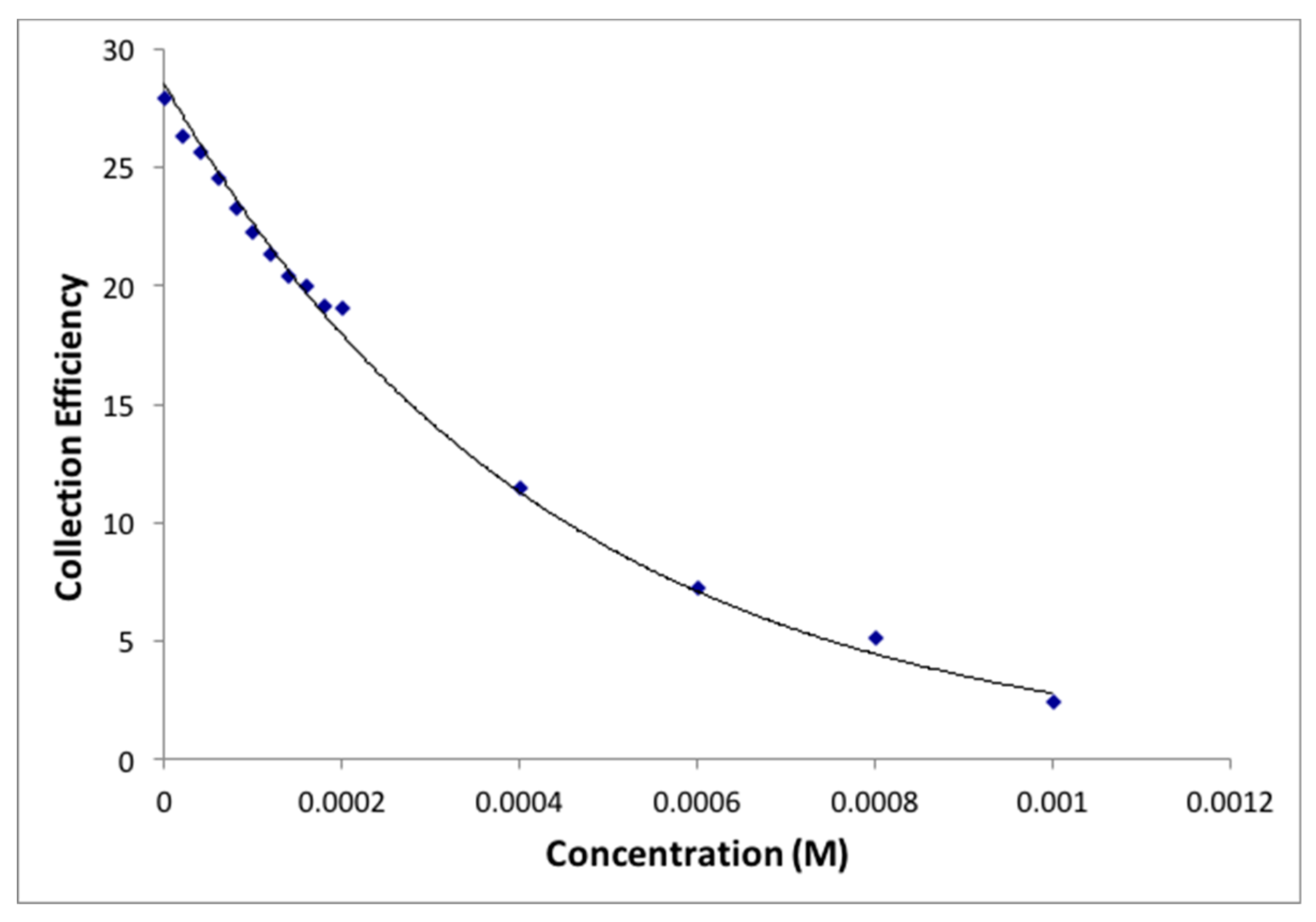
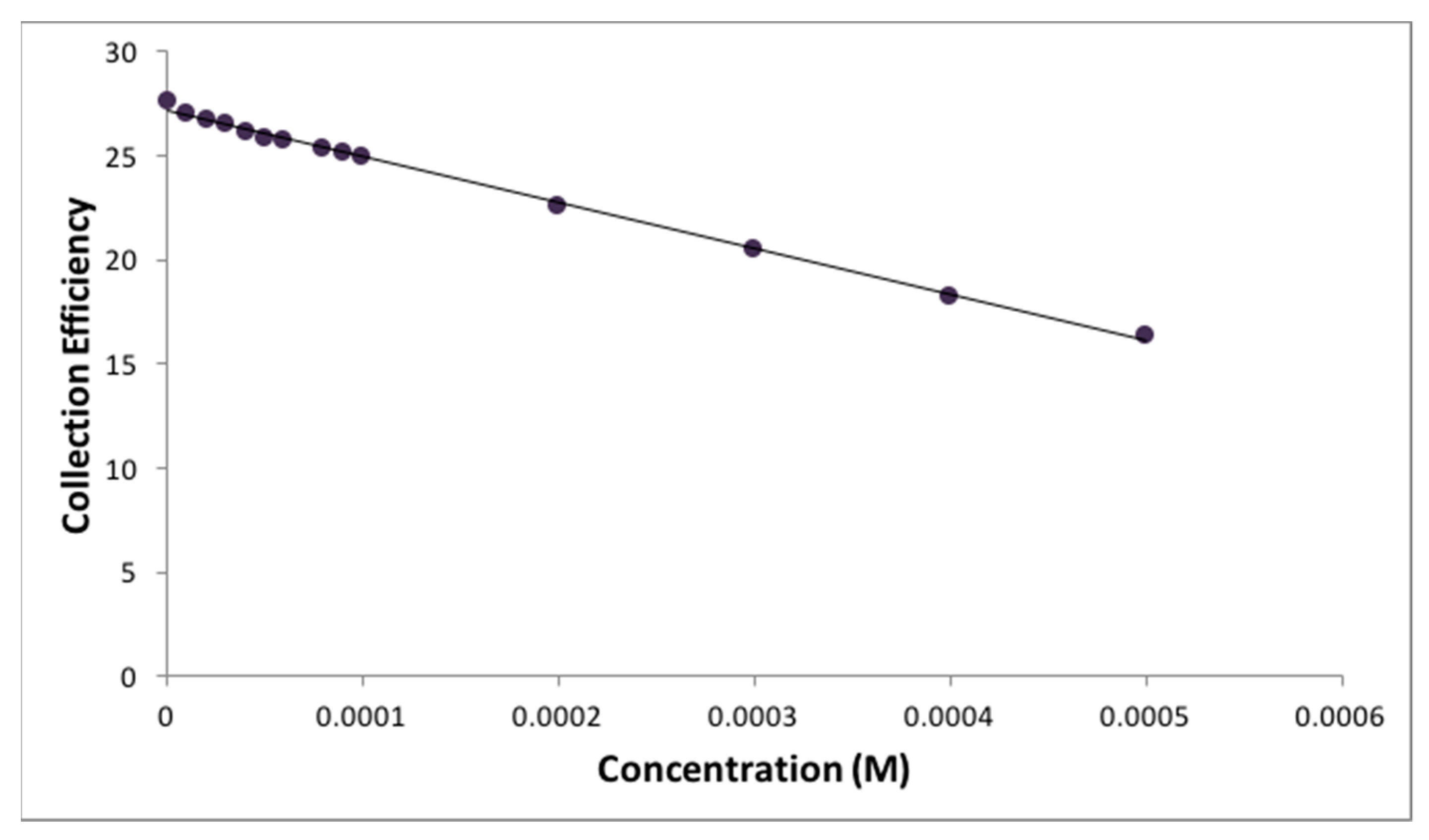
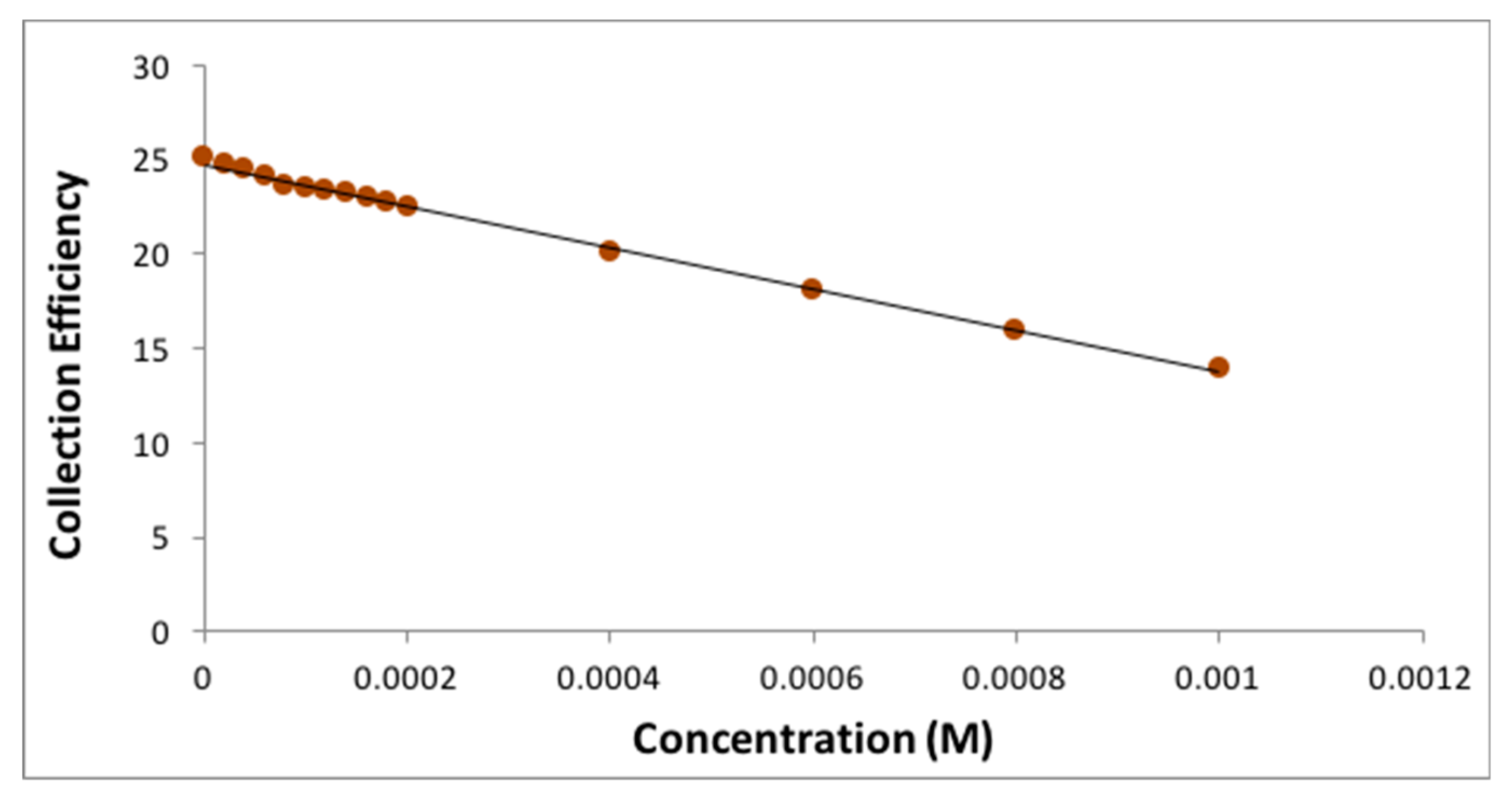
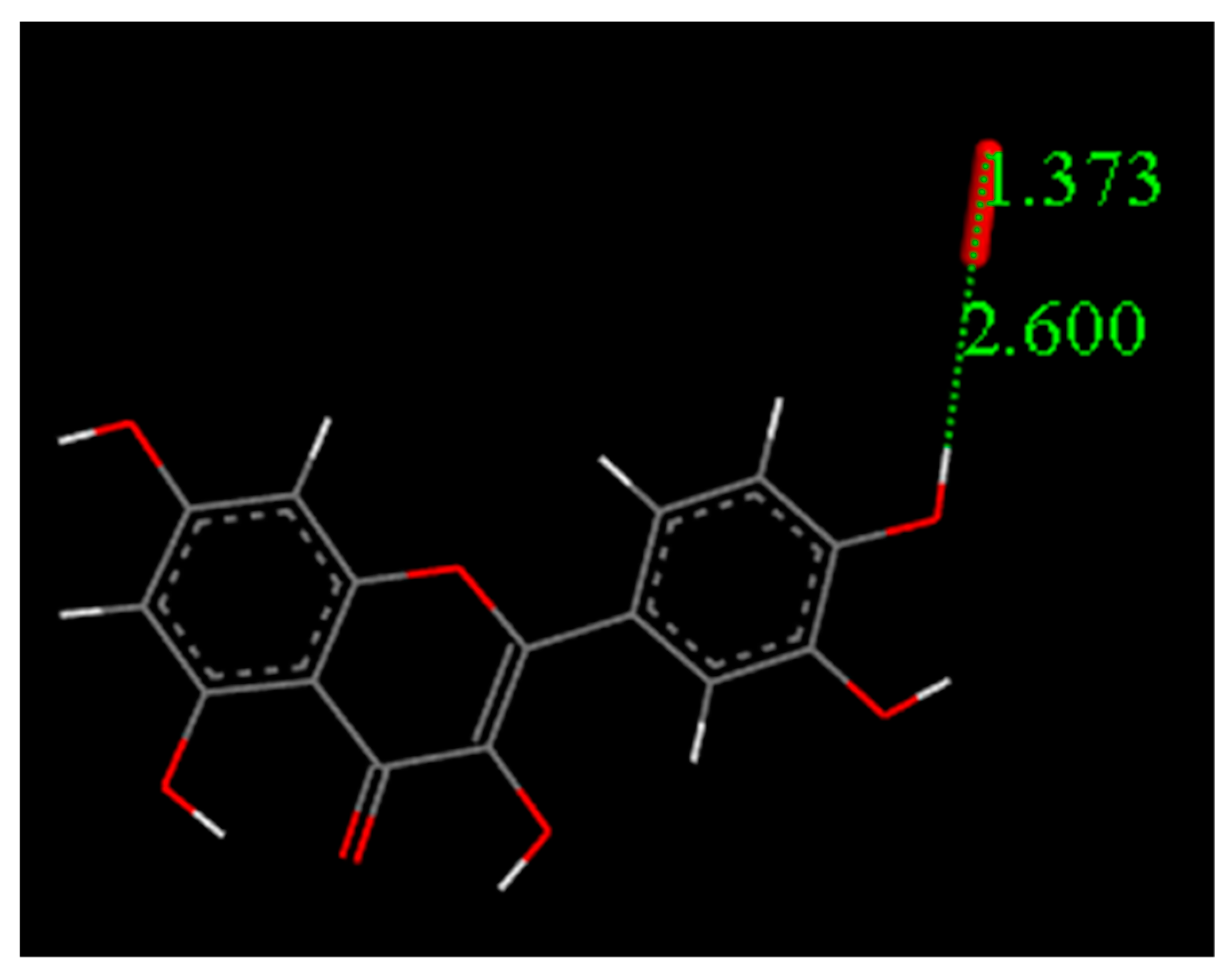
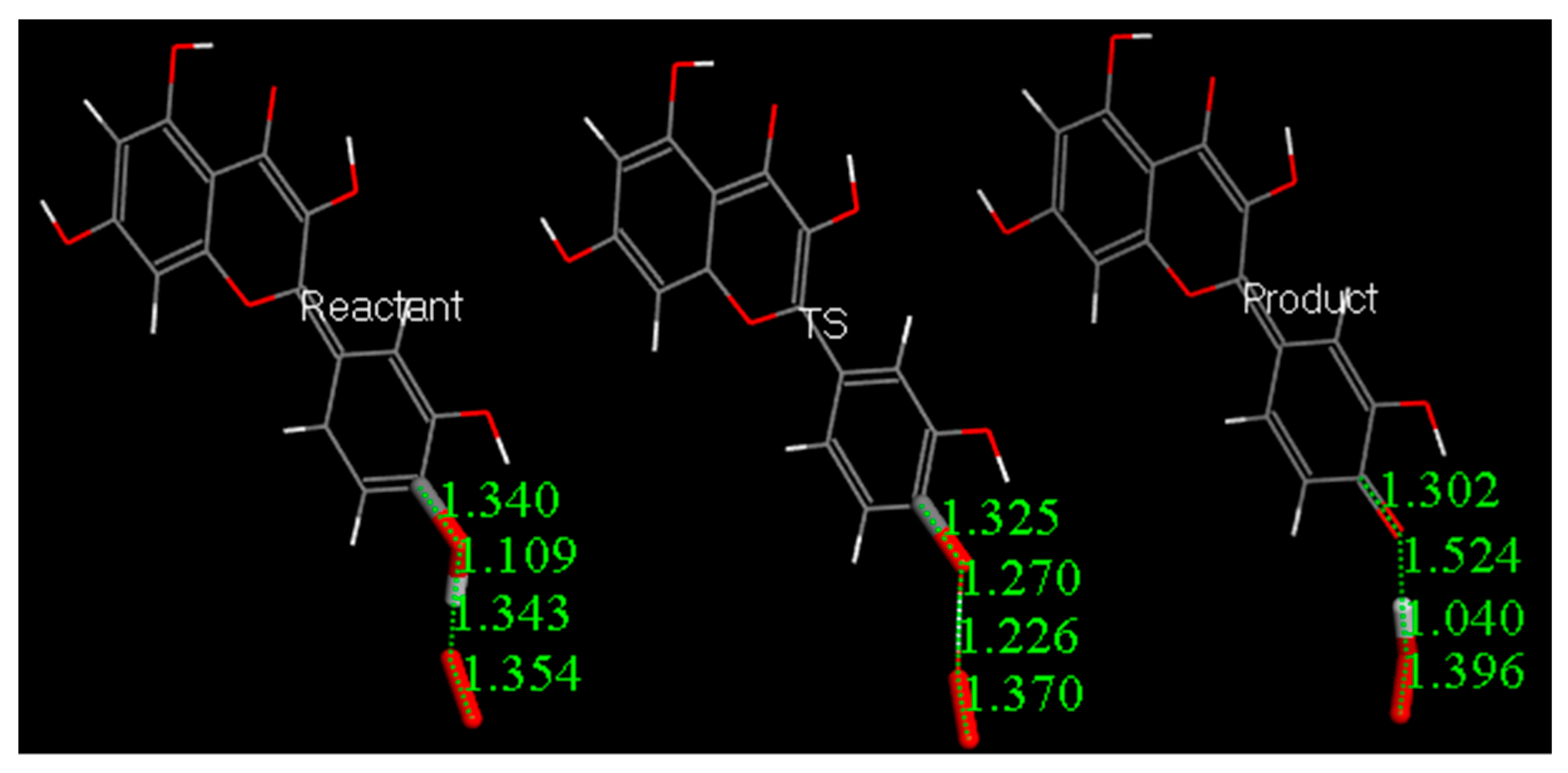

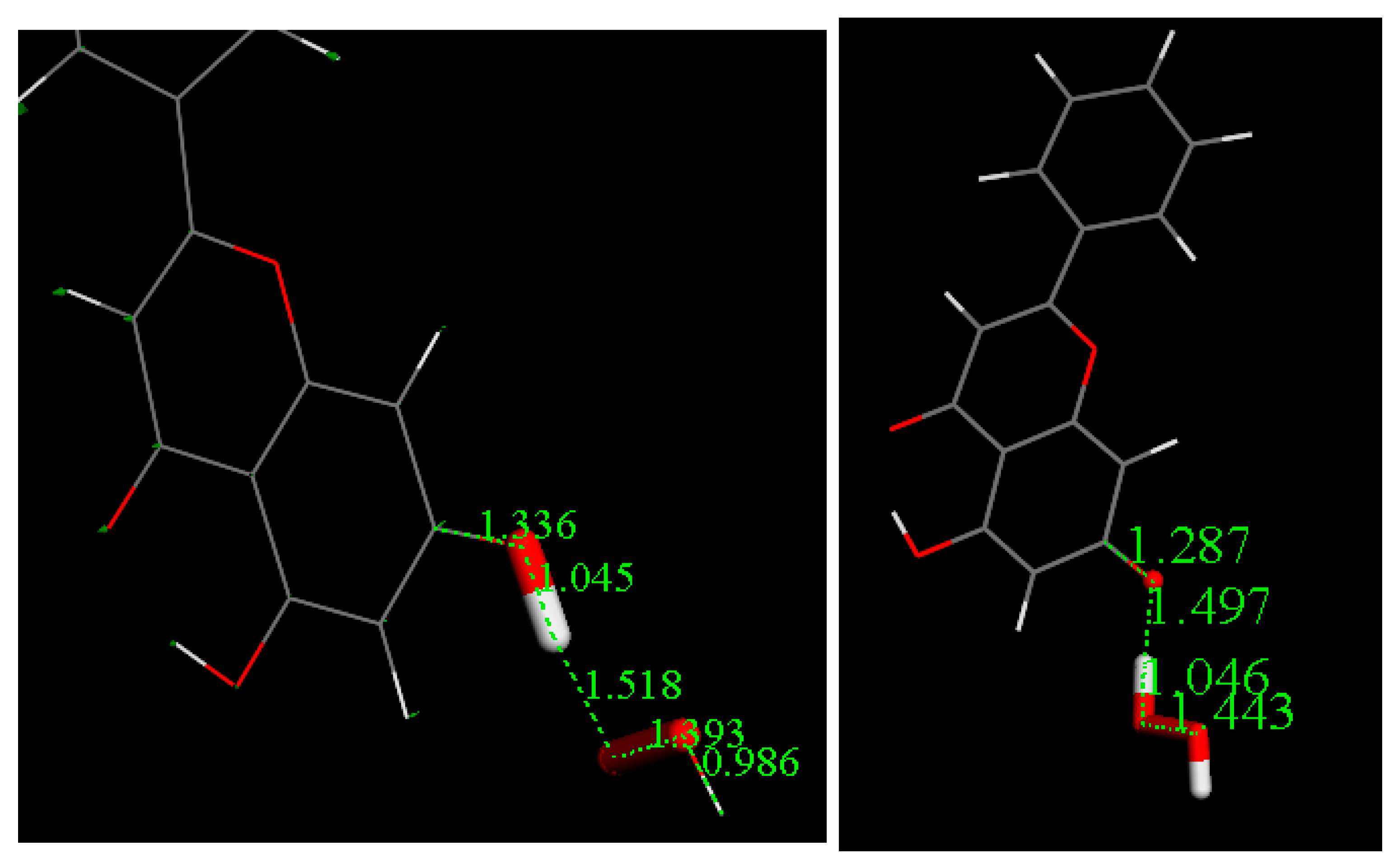
| Empirical formula | C15 H12 O6 |
| Formula weight | 288.2 |
| Temperature | 125(2) K |
| Wavelength | 0.71073 Å |
| Crystal system | Monoclinic |
| Space group | Pc |
| Unit cell dimensions | a = 16.650(3) Å |
| b = 5.220(1) Å β = 90.894(3)° | |
| c = 14.217(3) Å | |
| Volume | 1220.4(4) Å3 |
| Z | 2 |
| Density (calculated) | 1.568 Mg/m3 |
| Absorption coefficient | 0.123 mm−1 |
| F(000) | 600 |
| Crystal size | 0.12 × 0.07 × 0.03 mm3 |
| Theta range for data collection | 2.84 to 25.03° |
| Index ranges | −19 ≤ h ≤ 19, −6 ≤ k ≤ 6, −16 ≤ l ≤ 16 |
| Reflections collected | 19484 |
| Independent reflections | 4304 |
| Absorption correction | Empirical (SADABS) |
| Max. and min. transmission | 0.9854 and 0.9963 |
| Refinement method | Full-matrix least-squares on F2 |
| Goodness-of-fit on F2 | 1.056 |
| Final R indices [I > 2sigma(I)] | R1 = 0.0528, wR2 = 0.1053 |
| R indices (all data) | R1 = 0.0988, wR2 = 0.1263 |
| Antioxidant | Number of OH Groups | Slope (1/M) | Ratio of Slopes |
|---|---|---|---|
| Quercetin | 5 | −5.30 × 104 | 9.6 |
| Eriodictyol | 4 | −2.20 × 104 | 4 |
| Chrysin | 2 | −1.10 × 104 | 2 |
© 2019 by the authors. Licensee MDPI, Basel, Switzerland. This article is an open access article distributed under the terms and conditions of the Creative Commons Attribution (CC BY) license (http://creativecommons.org/licenses/by/4.0/).
Share and Cite
Belli, S.; Rossi, M.; Molasky, N.; Middleton, L.; Caldwell, C.; Bartow-McKenney, C.; Duong, M.; Chiu, J.; Gibbs, E.; Caldwell, A.; et al. Effective and Novel Application of Hydrodynamic Voltammetry to the Study of Superoxide Radical Scavenging by Natural Phenolic Antioxidants. Antioxidants 2019, 8, 14. https://doi.org/10.3390/antiox8010014
Belli S, Rossi M, Molasky N, Middleton L, Caldwell C, Bartow-McKenney C, Duong M, Chiu J, Gibbs E, Caldwell A, et al. Effective and Novel Application of Hydrodynamic Voltammetry to the Study of Superoxide Radical Scavenging by Natural Phenolic Antioxidants. Antioxidants. 2019; 8(1):14. https://doi.org/10.3390/antiox8010014
Chicago/Turabian StyleBelli, Stuart, Miriam Rossi, Nora Molasky, Lauren Middleton, Charles Caldwell, Casey Bartow-McKenney, Michelle Duong, Jana Chiu, Elizabeth Gibbs, Allison Caldwell, and et al. 2019. "Effective and Novel Application of Hydrodynamic Voltammetry to the Study of Superoxide Radical Scavenging by Natural Phenolic Antioxidants" Antioxidants 8, no. 1: 14. https://doi.org/10.3390/antiox8010014
APA StyleBelli, S., Rossi, M., Molasky, N., Middleton, L., Caldwell, C., Bartow-McKenney, C., Duong, M., Chiu, J., Gibbs, E., Caldwell, A., Gahn, C., & Caruso, F. (2019). Effective and Novel Application of Hydrodynamic Voltammetry to the Study of Superoxide Radical Scavenging by Natural Phenolic Antioxidants. Antioxidants, 8(1), 14. https://doi.org/10.3390/antiox8010014





